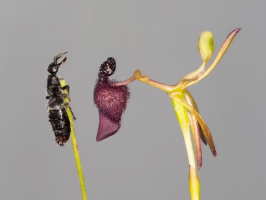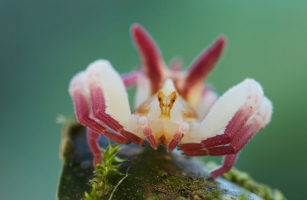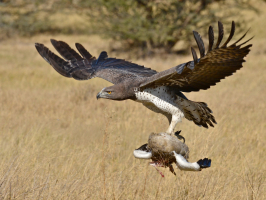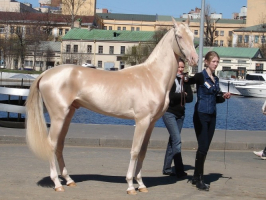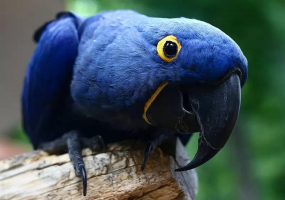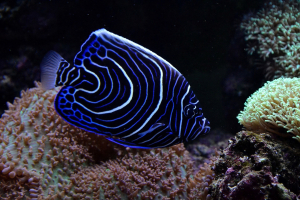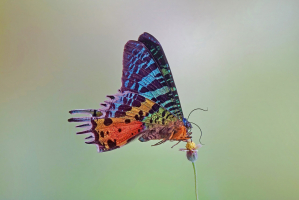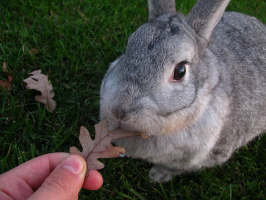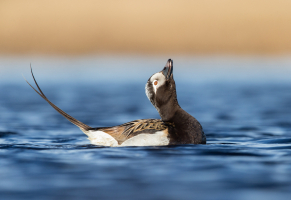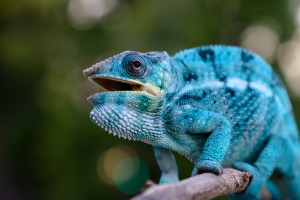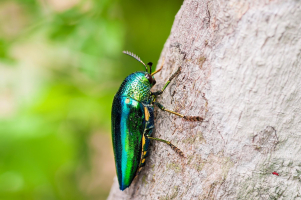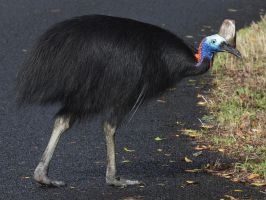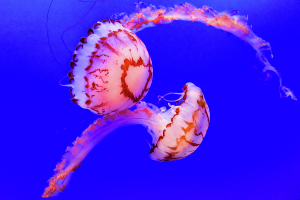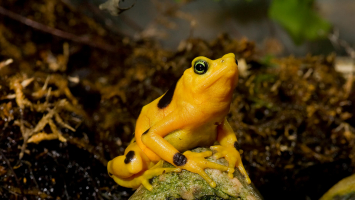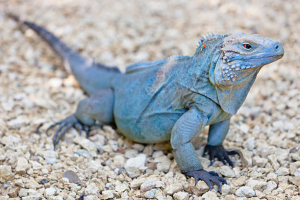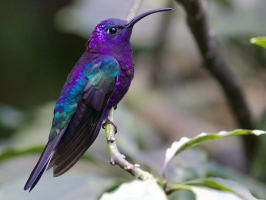Top 10 World's Most Unique and Beautiful Butterflies
One of the most beautiful and diverse groups of insects is the butterfly. More than 250000 species are included in the big group of butterflies. Even if all ... read more...butterflies are attractive, certain of them stand out from the others thanks to some distinguishing characteristics. Here is a list of the most unique and beautiful butterflies in the world, let's find out!
-
Blue morpho butterfly is one of the largest butterflies in the world with a wingspan of 5-6 inches. They are primarily found in South and Central American tropical woods. The distinctive feature of blue morpho butterflies is their bright blue wings with black borders. Male morpho butterfly wings are more lovely and colorful than those of the females. Blue morpho's wings have brown undersides with numerous eyespots. The blue morpho's back wings also aid in camouflage, allowing them to conceal themselves from potential predators such as lizards, frogs, and birds.
Most of the time, blue morpho butterflies were seen in the lower bushes of tropical woods. However, during mating season, they become clearly visible to all areas of the forest. The beautiful butterflies also release strong smells from their glands when they are threatened by other animals. They mainly feed on leaves of varieties of plants, fungi, and rotting fruits.
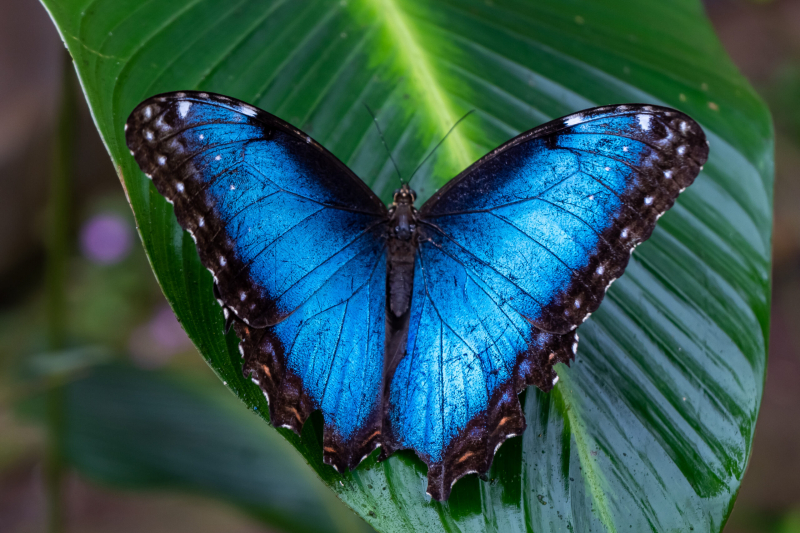
Via: Earth.com 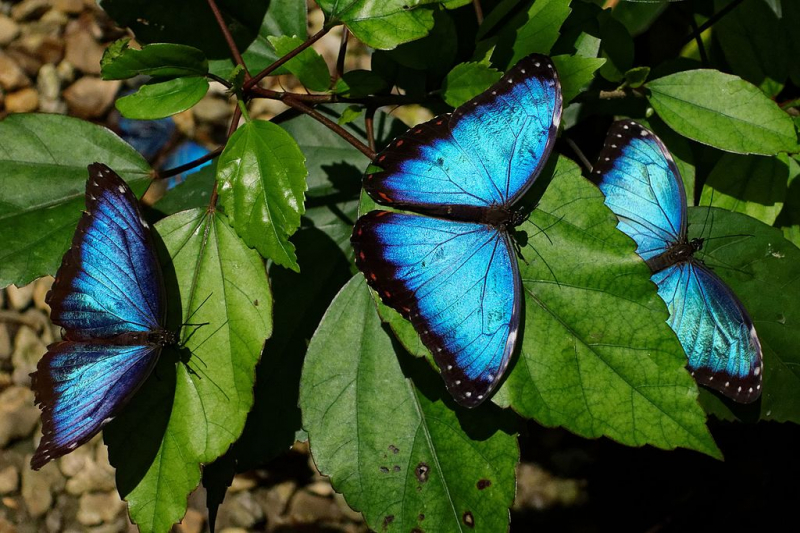
Via: Wikimedia Commons -
The zebra longwing butterfly was designated as Florida's official butterfly in 1996. The butterfly has low, narrow wings that are striped like zebras, as suggested by its name. Their wings have black backgrounds and golden striations. The pattern on the top and bottom of a zebra longwing's wings is identical. However, the color of the wing's underside is significantly paler than its upper surface. South and Central America are home to the amazing butterflies. Zebra longwings have wingspan measurements between 72 and 100 mm.
Only zebra longwing butterflies enjoy eating pollen, though. According to scientists, pollen's nutrients contribute to the zebra longwing butterfly's longer lifespan (approximately six months) than those of other butterfly species. Additionally, they enjoy nectar and leaves. When threatened, zebra longwings emit a creaking sound. These animals stay together in groups at night on tree branches.
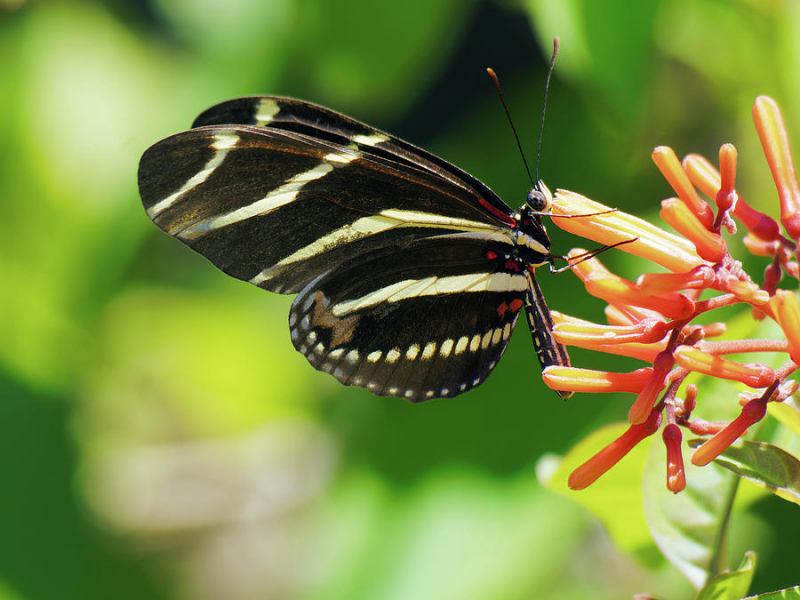
Via: Jill Nightingale 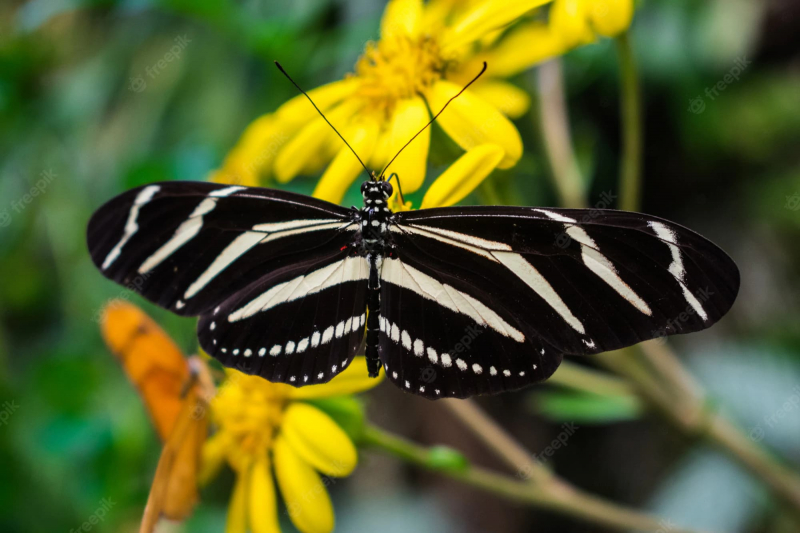
Via: Freepik -
The peacock pansy butterflies are recognized by their striking eyespots. The fascinating butterflies are native to South Asian countries. The peacock fan's upper side is a yellowish-brown tint with brown borders. On the wings, there are also distinct coastal bands and lovely "peacock eyespots". The eyespots on the lower portion of the wings get larger and more appealing. Seasonal changes affect the patterns on the underside of peacock pansies' wings. In contrast to the dry season, more vivid patterns and eyespots develop on the wings during the wet season. The coastal bars on the edges of the underside of their wings appear dull and less appealing when compared to the upper side.
The peacock pansy's eggs hatch in 3 to 5 days. Caterpillars eat mostly the leaves of their host plant. It also requires an additional 5–6 days for the pupa to mature into a butterfly. The wingspan of an adult peacock pansy ranges from 54 to 62 mm. They favor living in open spaces and gardens in particular.
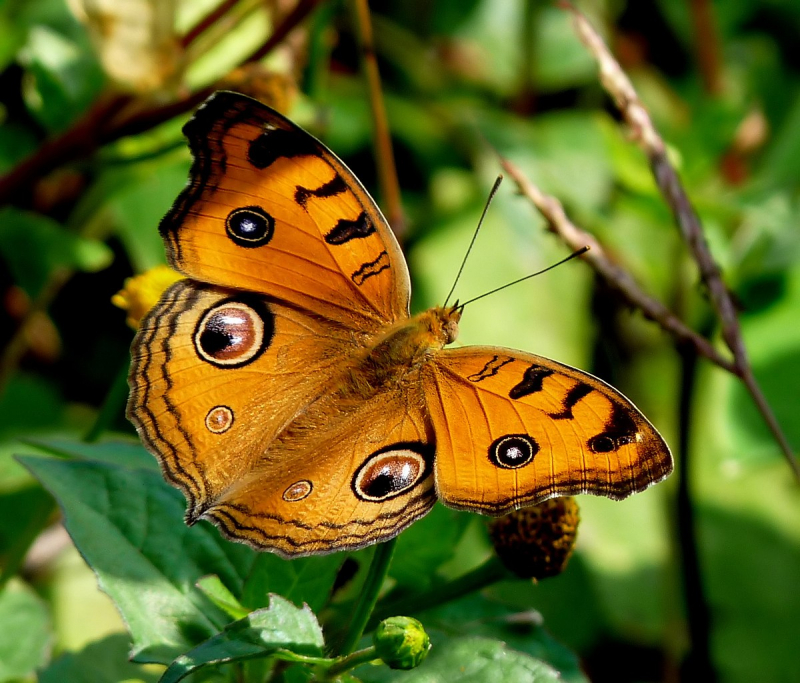
Via: Wikimedia Commons 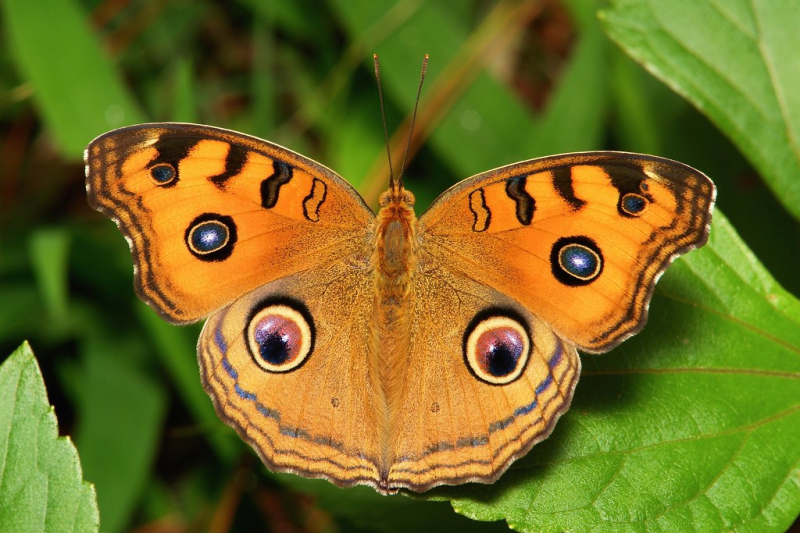
Via: Flickr -
The beautiful eighty-eight butterfly or diaethria clymena native to South and Central America. They received their name from the black and white stripes on their underwing that forms the number eighty-eight. Twelve separate species of diaethria butterflies share the same numbering. But each species has somewhat different coloration and patterning. Eighty-eight butterfly wings are black on the top, with a band of blue and green on the forewings. They feature striking black markings on the white and red underside of their wings. There are eighty-eight different species of butterflies, and they differ in terms of the thickness and brightness of their black markings.
Depending on the situation, the eighty-eight butterflies are found in both tiny and big groups. The active butterflies can even be found in buildings occupied by people. They enjoy relaxing on rock walls and dirt that is rich in minerals. On the leaves of trema plants, they lay eggs. The host plant's leaves are another food source for the larvae. Wingspan: The adult eighty-eight butterfly has a 35–40 mm wingspan. This butterfly eats rotting fruit primarily.
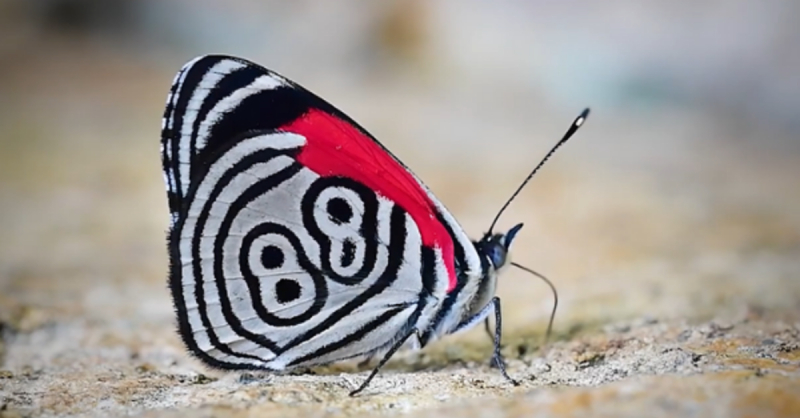
Via: Pinterest 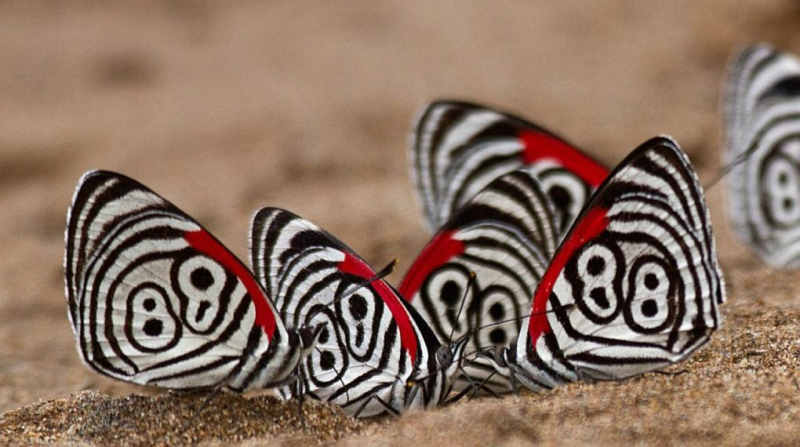
Via: Tek Deeps -
The fascinating giant owl butterflies are distinguished by large, owl-like eyespots on the underside of the wings. They originate from South and Central America and are part of the owl butterfly family. The wingspans of the huge butterflies range from 13 to 16 cm. They have a large eye design on their wings that resembles the eyes of numerous predators. In addition to being a threat to other tiny animals, it aids the big own-eye butterflies in escaping from potential predators like lizards and frogs. Owl butterflies have upper wings that are yellowish-brown tint with purple margins.
The large owl butterflies also fly a few meters in a short time. They usually fly across forests or agricultural fields in the evening. Owl butterflies mainly feed on fruits. They have a lifespan between 125 and 150 days.
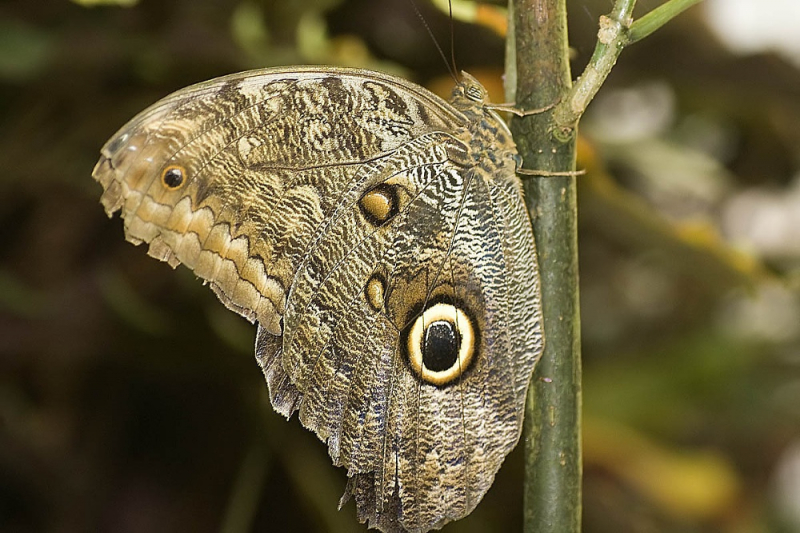
Via: Johnsd 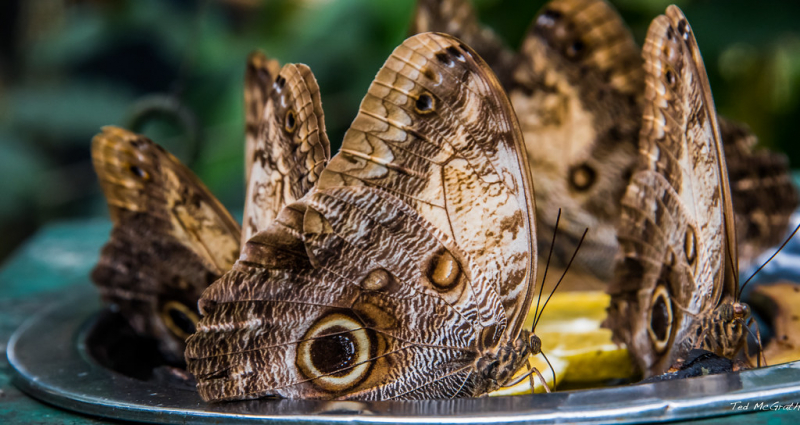
Via: Flickr -
Sylphina butterflies with transparent wings are found in Bolivia, Peru, and Ecuador. Sylphina angel's transparent inner wings are bordered with black outer wings. Their beautiful tail is a combination of pink, blue, and green tones. They only go to the air during full sunlight and spend the majority of their time hiding beneath plant leaves. They formerly resided in a high-elevation cloud forest.
The sylphina angel butterflies enjoy flying and going on solitary feeding expeditions. On bright days, though, they also discovered groups of tens to hundreds of butterflies hiding beneath plant leaves. During the spring, they also travel great distances (up to 320 km) in search of nectar-rich blooms.
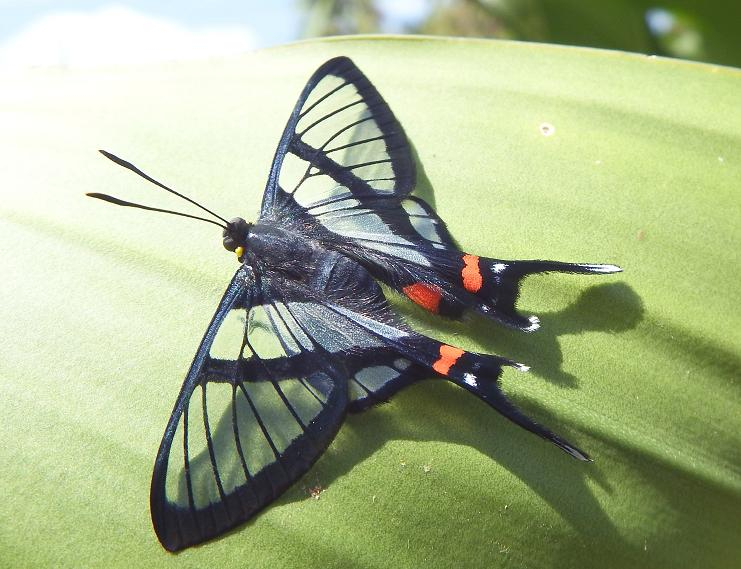
Via: Flickriver 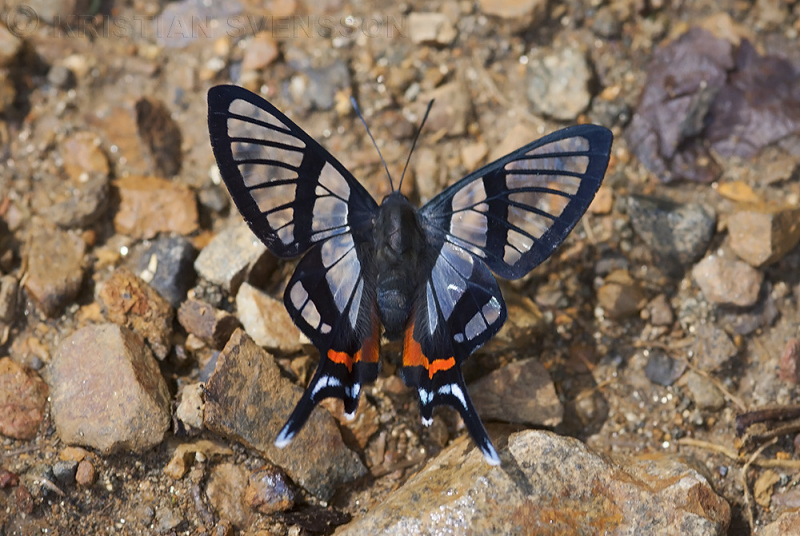
Via: Flickr -
The appealing white body and eyespots on the wings of the apollo butterfly make it simple to identify. The Apollo butterfly has remarkable four red eyespots on its hindwings in addition to several black eyespots on its forewings. They can be found in a few particular regions of France, Spain, and Italy. The position of the red eyespots on the wings of apollo butterflies also affects their size and brightness. One of the most endangered kinds of butterflies in Europe is the apollo butterfly.
The apollo butterflies are renowned for their defensive tactics in addition to their beauty. The apollo butterfly larvae have a deep, black color, and they use the color to conceal themselves. The adult butterflies' eye patches, which are a bright red color, prevent them from using camouflage. They produce an offensive odor to frighten off predators.
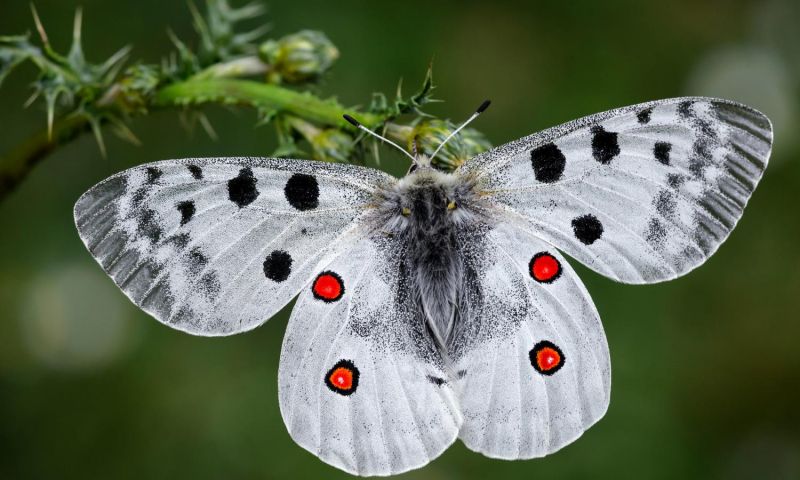
Via: Butterfly Conservation 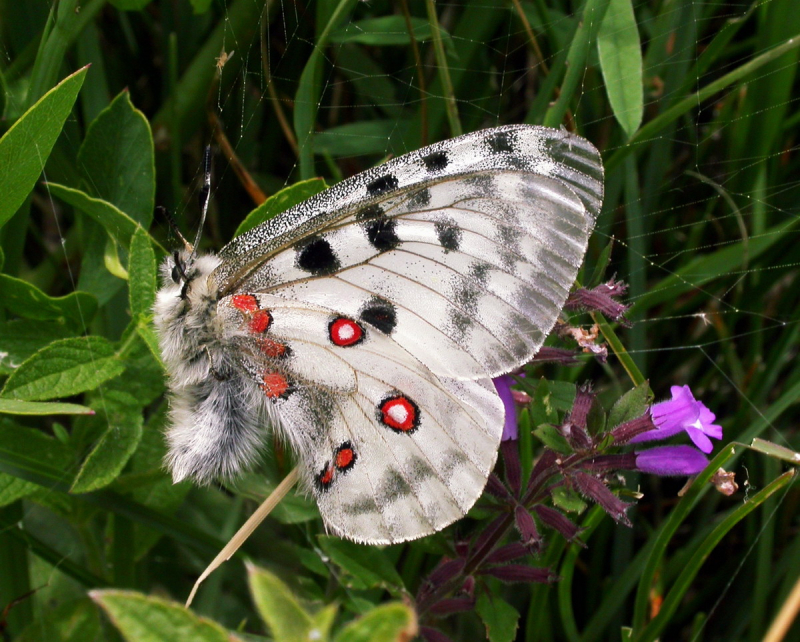
Via: UK Butterflies -
The Glasswinged butterfly's (Greta oto) name suggests that its wings are transparent. In Spanish-speaking regions, it may also be referred to as espejitos, meaning "little mirrors" because of its transparent wings. The butterfly is mainly found in the Central and northern regions of South America with sightings as far north as Texas and as far south as Chile. It is extremely tough for predators like birds and reptiles to capture them because of their transparent wings. In reality, the reddish-brown border around its wings makes them noticeable but difficult to see. Additionally, great oto butterflies go far, to Florida. They primarily eat lantanas, a common flower.
These butterfly species mate polygynously, with males attempting to obtain one or more female mates per breeding season. During lekking, male glasswing butterflies emit pheromones to entice females. The pyrrolizidine alkaloids obtained by the butterflies through their diet of Asteraceae plant species are what are used to make the pheromones. Additionally, it is unclear that the pheromone is employed to differentiate between species because the method by which the pheromone is produced is not only taken from butterflies and moths themselves but also from plants, as with the glasswing butterfly.
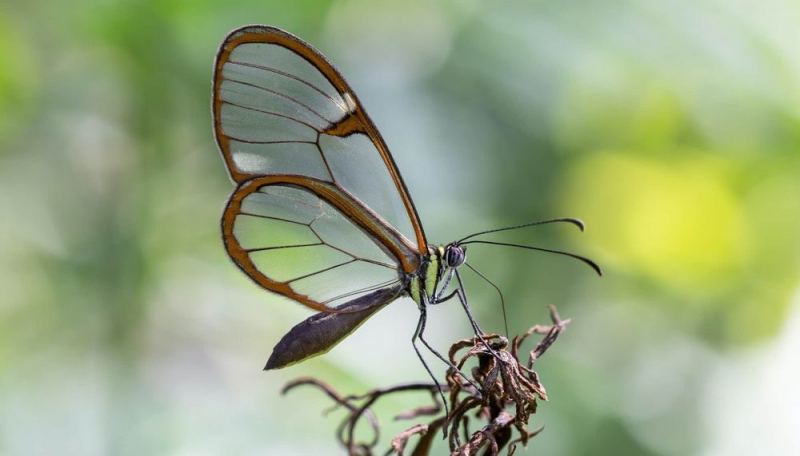
Via: Istock 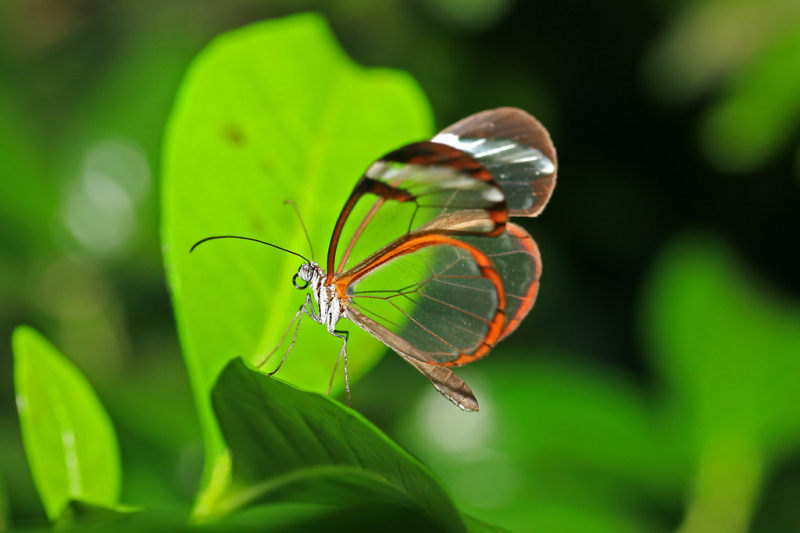
Via: TwistedSifter -
The dead leaf butterfly serves as a superb illustration of incredible animal camouflage. Its wings have a black and brown underside. The veins and erratic patterns on the wings resemble decaying leaves. As opposed to the underside, the upper side of the dead leaf butterfly's wings exhibits a variety of dazzling hues, such as blue, brown, white, and orange. They are also known as Indian leaf butterflies, and they are found in Asia's tropical forests.
Their wings' resemblance to a dead or fallen leaf makes it simple for them to conceal from prospective predators. They never soar too high or too quickly. They typically spend a lot of time relaxing near where they get their food. The leaf butterflies don't usually leave their perch unless they feel threatened. The dead leaf butterflies' ability to blend in helps them stay still for a long time. Dietary staples for dead leaf butterflies are fruit flakes and floral nectar.
Via: Early in time 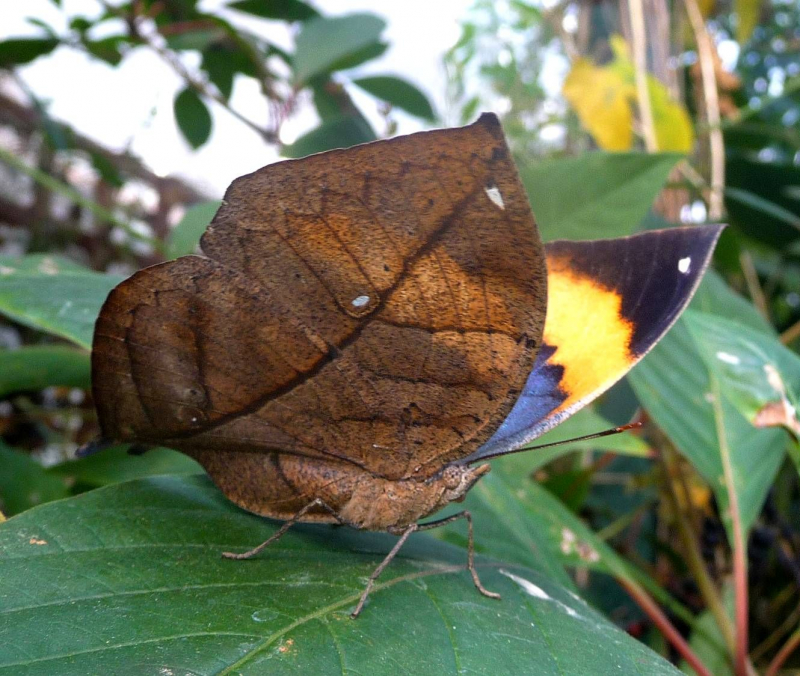
Via: Pinterest -
The emerald swallowtail is scientifically known as Papilio palinurus. In Virgil's Aeneid, palinurus, which means "butterfly", refers to the captain. By virtue of its Latin name, the emerald swallowtail is supposed to be some sort of navigator. This notion is fairly new given the butterfly's vivid green wings, which quickly catch your attention whichever way it is moving. They are mainly found in Southeast Asia.
The emerald swallowtail's internal and external wing colors are very different. The exterior is not as spectacular as the interior. Dusty greys make up the exterior, with blue and orange specks appearing toward the bottom of the wing. A starry night sky can be imagined from this collage. However, the interior hues resemble a spotlight in many ways. Dark sage green with an abrupt, angled radiation green streak on either side. It has been hypothesized that the emerald swallowtail uses its bright interior coloration to fool potential predators above and its dull exterior coloration to hide from them below.
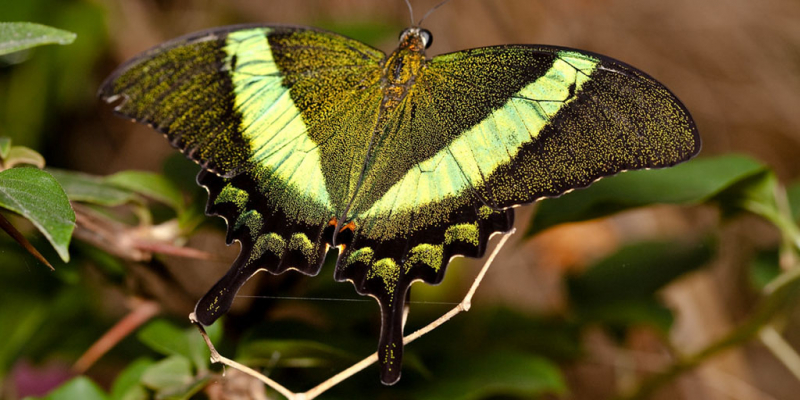
Via: American Museum of Natural History 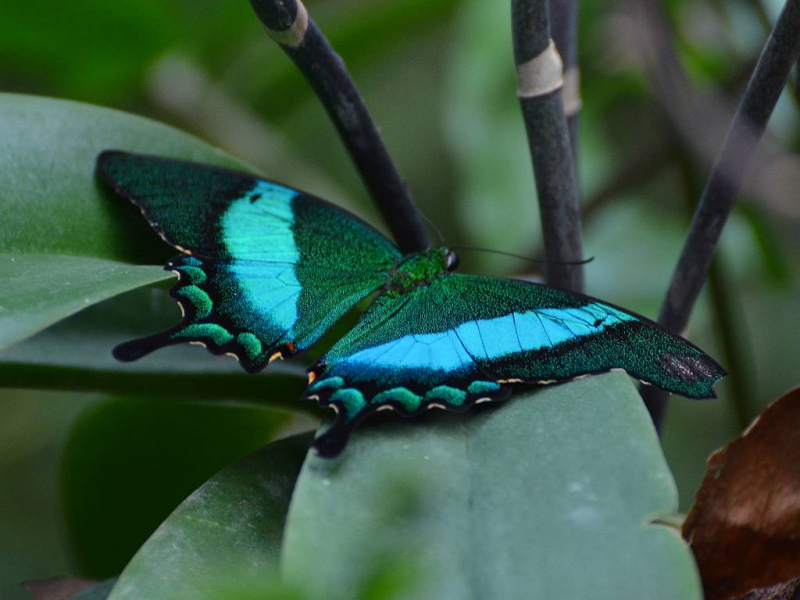
Via: Nerja Rob












